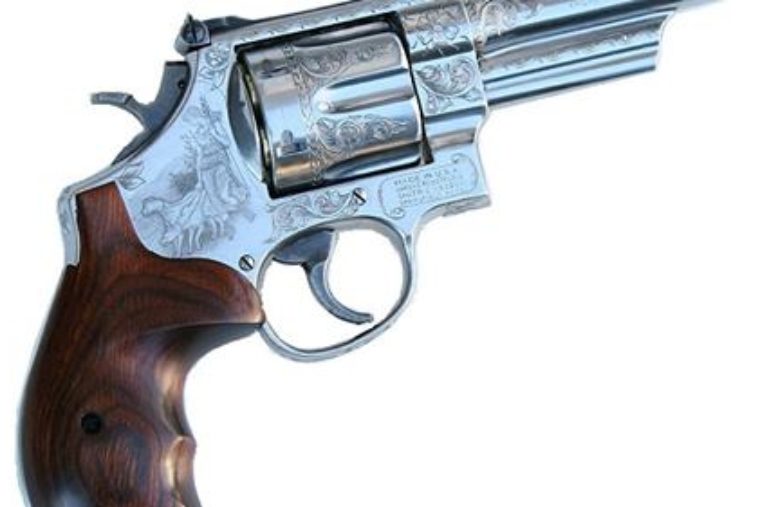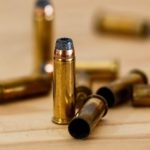Key point: The most powerful—and practical—handgun still in production.
Few handguns combine power and cachet, but the Smith & Wesson Model 29 manages to do so with ease. Described by fictional San Francisco Police Department Detective Harry “Dirty Harry” Callahan as “the most powerful handgun ever built,” the Model 29 indeed held that slot for many decades. Although more powerful handguns and ammunition types have since appeared, the .44 Magnum Model 29 is probably the most powerful—practical—handgun still in production.
In the first half of the twentieth century the largest revolver calibers were .45 ACP, used in revolvers such as the M1917 revolver, .45 Colt, a round used in older Colt revolvers, and .44 Special. While all of these bullets exceeded a diameter of .40 inches, they were eclipsed in energy delivered by the .357 Magnum. Although a narrower bullet, the .357 Magnum delivered a very respectable 494 foot pounds of energy, while the .45 ACP delivered 365, the .45 Colt 444, and .44 Special a mere 295 foot pounds. The .44 Special was also significantly slower, at 776 feet per second. All three of the big bore rounds flew at subsonic speeds. The .357 Magnum round, by contrast, broke the sound barrier at 1150 feet per second.
The heavier, bigger bore class of ammunition had clearly not yet found its champion. Gun enthusiasts, including the legendary writer Elmer Keith tinkered with the .44 Special round for years, trying to coax greater performance out of the cartridge by modifying the bullet and powder. The result: the .44 Magnum.
Read More
Key point: The most powerful—and practical—handgun still in production.
Few handguns combine power and cachet, but the Smith & Wesson Model 29 manages to do so with ease. Described by fictional San Francisco Police Department Detective Harry “Dirty Harry” Callahan as “the most powerful handgun ever built,” the Model 29 indeed held that slot for many decades. Although more powerful handguns and ammunition types have since appeared, the .44 Magnum Model 29 is probably the most powerful—practical—handgun still in production.
In the first half of the twentieth century the largest revolver calibers were .45 ACP, used in revolvers such as the M1917 revolver, .45 Colt, a round used in older Colt revolvers, and .44 Special. While all of these bullets exceeded a diameter of .40 inches, they were eclipsed in energy delivered by the .357 Magnum. Although a narrower bullet, the .357 Magnum delivered a very respectable 494 foot pounds of energy, while the .45 ACP delivered 365, the .45 Colt 444, and .44 Special a mere 295 foot pounds. The .44 Special was also significantly slower, at 776 feet per second. All three of the big bore rounds flew at subsonic speeds. The .357 Magnum round, by contrast, broke the sound barrier at 1150 feet per second.
The heavier, bigger bore class of ammunition had clearly not yet found its champion. Gun enthusiasts, including the legendary writer Elmer Keith tinkered with the .44 Special round for years, trying to coax greater performance out of the cartridge by modifying the bullet and powder. The result: the .44 Magnum.
by Kyle Mizokami



